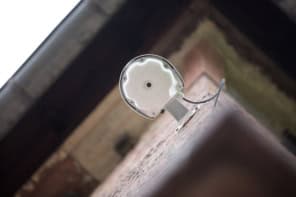Physicists in the US have made a single-pixel detector that can measure the energies of single photons. The device, which is based on superconducting aluminium, could be built into large arrays to make detectors for the world’s most powerful telescopes (P Day et al. 2003 Nature 425 817).

Astronomers routinely use charge-coupled detectors (CCDs) in telescopes to capture and measure the light emitted by stars and galaxies. However, these detectors cannot simultaneously detect individual photons and record their energy because of noise. Single-photon detectors would significantly improve the performance of telescopes and other astrophysical experiments, such as measurement of the cosmic microwave background.
Jonas Zmuidzinas and colleagues at the Jet Propulsion Laboratory and the California Institute of Technology made their detector from a single layer of superconducting aluminium about 2 angstroms thick. At temperatures near 1 kelvin a resistance-free current flows in the film due to the movement of Cooper pairs of electrons. When photons hit the film, however, some of these pairs break up and this causes a reduction in the supercurrent. Zmuidzinas and colleagues measured this change with a microwave probe, which allowed them to calculate the energies of individual photons.
The detector operates at low temperatures to eliminate the thermal effects that would otherwise disrupt a single-photon signal. However, the device is relatively simple to fabricate, so it could easily be made into a large array that contains hundreds of pixels. Comparable existing devices contain only about 40 pixels.
The team is now working to improve the sensitivity of the detector. “With about an order of magnitude improvement in sensitivity, the detectors would be compatible with the most demanding applications,” team member Peter Day told PhysicsWeb. “We are looking forward to building a prototype instrument using this technology for a telescope such as the Caltech Submillimetre Observatory (CSO).”



